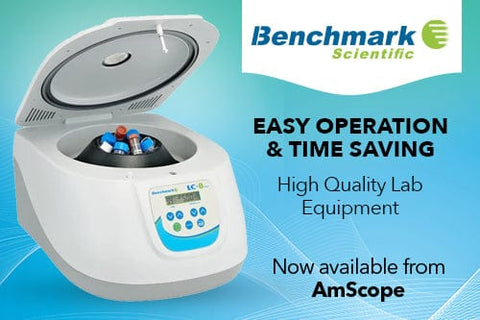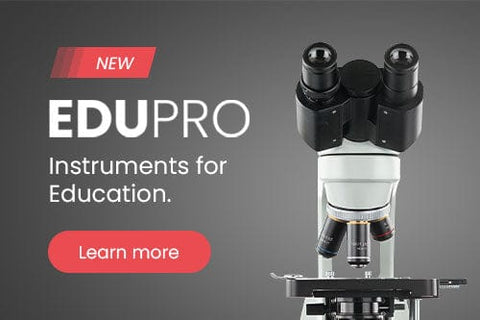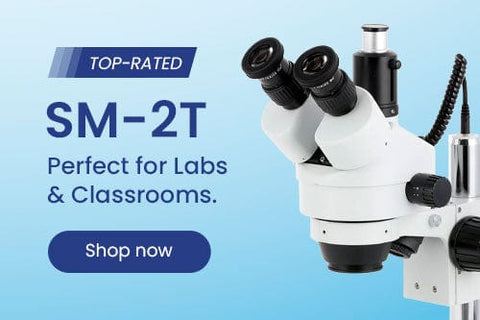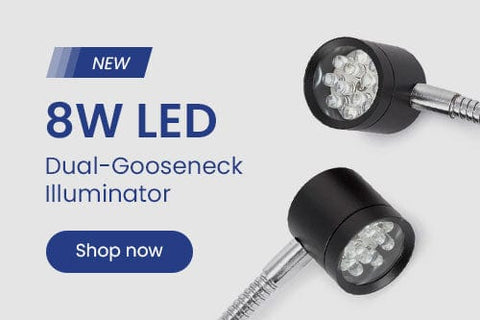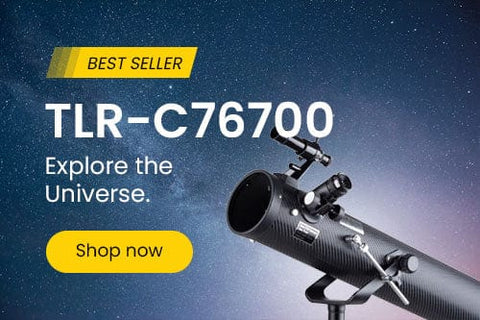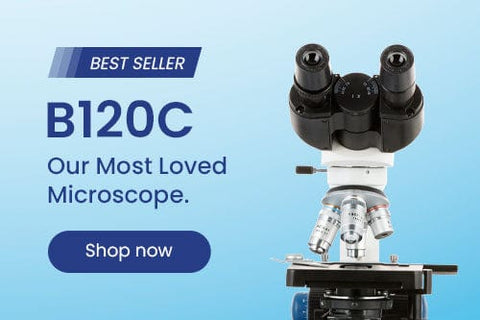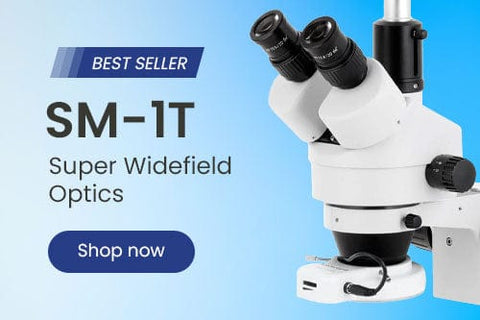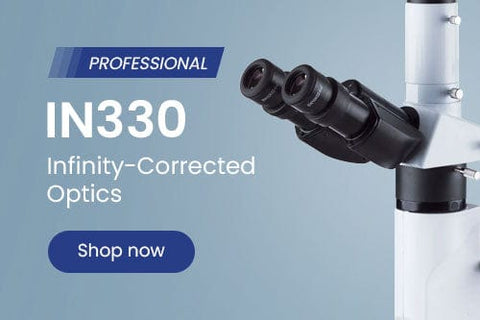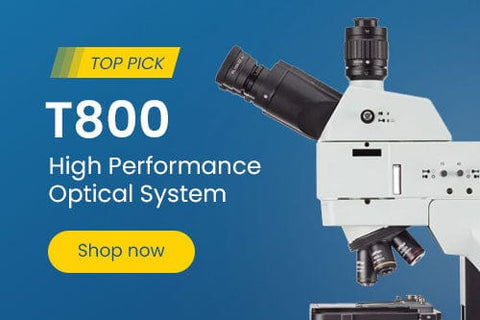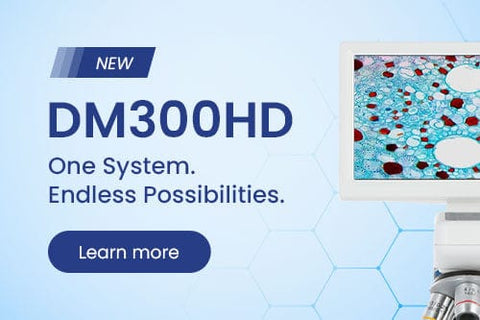Ultimate Guide to Industrial Inspection Microscopes

What is industrial inspection? Also known as quality control (QC), industrial inspection is an inspection and testing process that manufacturing companies use to prevent unsatisfactory products from reaching users. When performed properly with the right equipment, industrial inspection can improve customer satisfaction by delivering consistently high-quality services and products, reducing waste, and increasing efficiency and revenue for your organization.
Although industrial inspection or QC has a lot of similarities with quality assurance (QA), these two concepts should not be confused with one another. QA focuses on how a product is made and how a process is performed, while QC focuses on the inspection aspect of industrial management.
In other words, QC centers on the operational activities and techniques used to meet quality requirements. As such, you need to use leading-edge equipment such as industrial inspection microscopes to perform QC duties. Sleek and powerful, industrial microscopes are suited to a wide range of analysis applications, such as sophisticated analysis and routine inspection.
Read on to learn more about industrial inspection and QC microscopes.
What Are Industrial Inspection Microscopes?
Industrial inspection microscopes are microscopes for industrial inspection and QC. Also known as quality control and assembly microscopes, industrial inspection microscopes are used to inspect finished products and materials. They usually come with a screen so several people can view the observed item at the same time.
There are three types of industrial inspection and quality control microscopes, as listed below.
1. Stereo Zoom Microscope
The stereo zoom microscope is the most common type of industrial inspection microscope. It consists of two eyepieces with a magnification range that goes up to 200x and a main objective lens. A good example is the H800.
This type of microscope is typically used in precision assembly work, including medical device manufacturing, soldering, and laboratory use.
Pros
- Live 3D view
- Budget-friendly
- Large working distances allow users to use tools — i.e., cutters and soldering irons — under the microscope
- Depth of field that simplifies the precision assembly process
Some models, like the H800, come with a multi-function microscope camera that can stream live video through HDMI and connect to a computer. These models produce exceptionally sharp images for photomicrography.
Cons
- Limited magnification range that usually only goes up to 200x
- Some models don't provide digital measurements
- Some models don't have image capture
- Can give you eye fatigue if you use it often
2. Video Lens Inspection System
A video lens inspection system consists of an analog/USB/HDMI camera with a single lens. These microscopes usually come pre-assembled but can also be built piece by piece. Magnification can go up to 3000x.
Video lens inspection systems are typically used for:
- Quality documentation and inspection
- Applications that require high magnification
- Performing analysis and measurement, particularly when used with a USB camera
- Simple assembly work at low magnifications
Pros
- Wide price range, so you can easily find one that fits your budget
- Versatile — can be configured to provide a variety of magnifications
- Reduces eye fatigue
- Easy analysis and image captured when used with USB camera
Cons
- Camera images may lag when used with a USB camera
- 2D-only image that significantly lowers depth of field at higher magnification compared to traditional stereo microscopes
3. Trinocular Zoom Microscope Inspection System
These microscopes have a zoom microscope along with an extra third port for a camera for image capturing. Depending on what kind of microscope you have, you can connect the camera to a computer, if you have a USB-type camera. You may also connect it to a monitor if you have an HDMI, SXGA, or VGA camera.
Trinocular zoom microscopes are typically used for:
- Quality inspection where you may have to perform rework, assembly, or repair
- Assembly applications that don't require large depths of field or constant 3D images
- Assembly applications where image measurement and capture are necessary or preferred
- Inspecting circuit boards
- QC in semiconductor and electronic industries
Pros
- Image measurement and capture when used with a digital or USB camera
- 3D view and 2D screens are visible when working underneath the microscope
- No eyepieces required
- Large working distance
- 2D screen helps reduce eye fatigue
Some models include rubber eye guards and full metal chrome-plated components.
Cons
- Less budget-friendly than stereo zoom microscopes
- No 3D depth of field when viewing samples and objects through the monitor
Required Accessories for Industrial Inspection Applications
Besides industrial inspection microscopes, you also need some other accessories for industrial inspection and QC. These include the following.
Inspection Mirrors
Inspection mirrors let you take a close look at a specific part of a product or material. They have retractable and extendable metallic handles that you can use to see hard-to-reach areas. These mirrors come in a variety of sizes, ranging from one to three inches in diameter.
Publications
Publications are inspection manuals for spotting defects. They are typically used to locate pipeline inspection or general coating defects. An example would be Fitz's Atlas, the leading resource for inspectors, coating specialists, and surveyors worldwide.
Most publications are pocket-size books that are ideal for office and site use. They cover a wide range of defects, such as:
- Surface conditions
- Welding faults
- Coating and application defects
- Marine fouling
- Microscopy
They also come with appendices with breakdown scales, paint compatibility, paint characteristics, and calculations.
Torches or Flashlights
If you're working in a dark or shaded area such as a large production site or ballast tank, you may need a torch or flashlight to see your products. Like inspection mirrors, these torches are highly portable and come in a range of sizes.
How To Select the Right Microscope
With so many models on the market, picking the right microscope can be difficult, particularly if you have never bought a microscope before. Here is a list of the variables you should consider when selecting the right microscope for your project or company.
Magnification
Look at your microscope's magnification. Does it fit the requirements of your project? If it does not, you need to look for a microscope that has higher magnification.
Certain types of microscopes only provide up to a certain degree of magnification. Monocular — single-lens — microscopes, for instance, only work for up to 1000x magnification. You would have to invest in a binocular microscope for higher magnification levels.
Optical quality
One of the most important things to consider when buying a microscope is optical quality. This is mostly determined by the quality of the objective lens and eyepieces.
Ideally, your microscope should have an achromatic lens. An achromatic lens is a lens that corrects how colors refract through a curved lens at different angles. It has a 65% flat field and color corrects by producing a "flatter" image of the specimen than would normally be created.
If you want even flatter images, consider getting semi-plan or plan objectives. Semi-plan or semi-planar objectives have an 80% flat field and consist of either three or more element apochromats or two lens element achromats. Plan or planar objectives have a 95% flat field and have larger working distances than semi-plan objectives. They are also the most expensive.
Price
You also need to consider the price of the product. Look at your budget and ask yourself if you are willing to pay the price of your chosen microscope.
While it is generally true that higher price equals higher quality, that is not always necessarily the case. If you don't have a big budget and you do not require a microscope with lots of functionalities, you may be able to find a relatively inexpensive microscope that fits your requirements. A healthy range of reasonably-priced microscopes comes with excellent optics and magnification. Our industrial inspection microscopes fall under this category.
4. Comfort
The next variable you should consider is comfort.
If you're going to be spending long hours inspecting your materials for flaws, you should get microscopes that don't strain your eyes, such as video lens inspection systems and trinocular zoom microscope inspection systems. As covered above, these industrial inspection systems often come with cameras that you can use to live stream images to computers and other monitors. Since computers and monitors are much larger and don't require you to keep your head in a certain position, you can work more comfortably for longer periods.
5. Application
Finally, you need to consider whether your chosen microscope is capable of doing what you want it to do. Ask yourself the following questions:
-
Does it have a mechanical stage? Mechanical stages or glide tables are devices that hold a slide in place and allow you to move the sample without touching it. They are vital for many sophisticated industrial applications. Many monocular microscopes do not have mechanical stages. However, most binocular microscopes have mechanical stages, making them a good pick for sophisticated applications that require mechanical stages.
- Do you need microphotography? If you need to take close-up pictures of defects, you might need to get a trinocular microscope. These microscopes have a third port that you can use for microphotography.
New Developments for Industrial Inspection Microscopes
In recent years, several new developments have come out for industrial inspection microscopes, making the process of analyzing and inspecting materials and products much easier. These include the following.
Digital Industrial Inspection Microscopes
A subtype of digital integrated microscopes, digital industrial inspection microscopes use digital cameras to streamline and transform your microscopy workplace. Unlike optical or traditional microscopes, they come with fully-integrated digital cameras. This means you can inspect and analyze specimens through a screen or monitor. Depending on your model, you may also be able to perform advanced tasks such as recording videos, analyzing 3D samples, creating reports, and editing images.
Digital integrated microscopes come in two main types:
- Digital microscopes with removable digital cameras: Some digital microscopes come with digital cameras that you can plug in and remove as needed. They are usually the go-to choice for industrial photomicroscopy because of their flexibility. You can use almost any kind of camera with these microscopes as long as they fit the port. This includes industry-grade cameras like digital SLR cameras.
- Digital microscopes with built-in digital cameras: Digital microscopes with built-in digital cameras are usually used in schools to prevent loss, theft, and damage. They are less future-proof than digital microscopes with removable digital cameras because their cameras are difficult if not impossible to remove. They are also harder to repair and replace for the same reason.
Wi-Fi Enabled Microscopes
A Wi-Fi-enabled microscope connects to your microscope and has its own Wi-Fi signal. To use this microscope, you have to download an app on your phone or tablet. After you turn on your microscope's Wi-Fi, you can use this app to view live images and videos on your phone.
The main benefit of these microscopes is that you can use your phone to view microscopic images from anywhere in your lab since the Wi-Fi range can extend up to 30 feet in some models. Unfortunately, the frame rate and resolution of these cameras are not very high. As such, these microscopes are not well-suited for professional industrial inspection.
Buying Industrial Inspection Microscopes
With so many types of industrial inspection microscopes to choose from, picking the microscope for your workplace can be difficult. It is particularly challenging if you are new to buying microscopes.
That is why we at AmScope only offer the best industrial inspection microscopes on the market. Not only do our microscopes come from industry-level brands, such as OMAX, AmScope, and IQCrew, but they also have something for everyone, whether you are in the manufacturing or superconductor industry. Our microscopes range in magnification from 0.7X to 2500X and are compatible with various camera types, including USB 2.0, USB 3.0, HDMI, and HDMI/USB 2.0.
We also offer:
- Fast and same-day shipping for orders over $75
- A simple 30-day return policy
- A five-year warranty on all AmScope microscopes
For more information about our microscopes, contact us today. Our dedicated customer service team is always ready to help.




